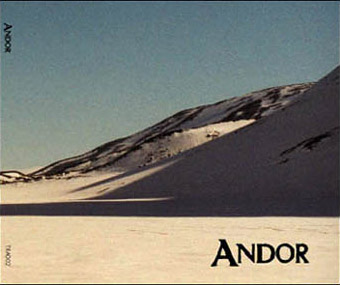
TRAD02
2001
 |
AD INEXPLORATA
TRAD02 2001 |
| Rösten
(The human voice) |
It is probably our very oldest instrument, an instrument that through historic and prehistoric times has been used to tempt, to frighten, to communicate, to allure, to swing, to upset, to amuse and much else. |
| Lyra
(Lyre) |
Already the old Greek, but also the Nordic Vikings have used this well sounding instrument. Take a piece of plank (about 4”x14”) about 3 feet long suitable wood. Cut off all that is not a lyre. Put on a lid, bridge, strings and pegs and you have a lyre. |
| Tagelharpa
(Bowed harp or horse tail harp) |
A “tagelharpa” is a lyre with strings made of twisted horse tail. “Harpa” has been used as name of several different kinds of instruments and of feisty women. Besides the tagelharpa is almost like a lyre played with a bow. |
| Mungiga or Munharpa
(Jaw harp or Jew’s harp) |
This is an instrumental parasite that is depending on a host animal like a cranium as a resonance box. If the cranium is attached to a body with good breathing control and with some musicality, delightful music can appear. When the host animal dies the jaw harp can occupy a new one. |
| Nyckelharpa
(Sometimes called key fiddle) |
At the same time one of our oldest and one of our most up to date bowed instruments. The nyckelharpa in Andor is one of the oldest known types, a so-called single harp or Mora harp. It is a string instrument, which has been equipped with keys so you don’t need to touch the strings. The nyckelharpa is a very Swedish instrument so far that it only exceptionally has been indicated in other countries. |
| Pipsäck
(Bagpipes) |
A bag with pipes that squeaks when you squeeze it. In Scotland it is classified as a weapon, but here in Sweden it has mostly accompanied dance and joy. |
| Kohorn
(Cow’s horn) |
It is an outgrowth that formerly was common on the heads of cows. Cow horns have been a very useful raw material for a lot of household utensils that nowadays are made of plastic. From the cow horn you have also made loud sounding signal instruments. A very useful working tool before the mobile phone was discovered. |
| Lur
(Horn) |
An elderly ancestor to nowadays trumpets, trombones, bass tuba and similar instruments. As a rule they are made of wood, but other common materials are bark and bronze. |
| Videflöjt
(Willow flute) |
Can be made of a bark tube that you twist away from the branch when the sap is rising. You play it with over tone technique. Soon it cracks and has to be thrown away. |
| Minivissla
(Mini whistle) |
Whistles of different types have been made all over the world for ages. You have whistled to attract sweet girls, to call for birds and other booty animals. You have made signals and commanded both animals and humans by whistles piercing tones. The mini whistle on Andor is made of the tip of a cow horn and functions very well as a dance instrument. |
| Spälpipa | The spälpipa is descended from Härjedalen, a province in Sweden, and the name means whistle for playing. It is a drilled and lathe turned peace of spruce that has finger holes. The sound is soft and the key can be seemed a little peculiar for a modern ear. |
| Slägga
(Sledge hammer) |
The sledge hammer is a large hammer that seldom is regarded as an instrument. On the other hand it is very useful if you for instance forge jaw harps in a forge. |
| Skrot
(Trash) |
Trash is mostly the shape that the instruments take after have been sat upon, driven over, jumped upon and so on. Scrap can also be useful to make some musical sound effects. From trash you can sometimes, by using a sledge hammer, make jaw harps and other nice instruments. |
| More about the instruments, click here | (Photos and text in Swedish, will soon be translated to English) |